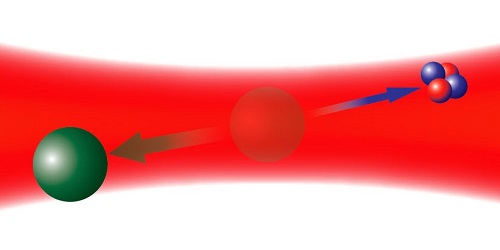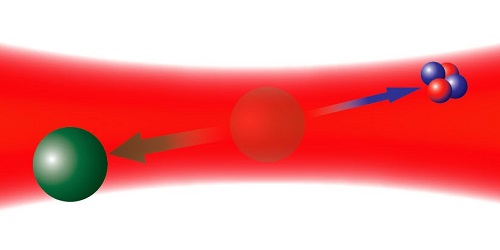Detecting Nuclear Decay with Recoil
There’s no shortage of ways to analyze nuclear decay. But many of these tried-and-true techniques fall short when it comes to nuclear forensics, where investigators analyze the radioactive contents of a small grain of sand or soil, or some other particle, to track down its geographical origin. Now, Alonso Castro and colleagues at Los Alamos National Laboratory, New Mexico, propose a novel way to identify isotopic compositions of nuclear material by measuring the recoil of radioactive particles suspended in laser beams.
In nuclear decay, an unstable atom transmutes into a stable daughter atom and emits a gamma ray, an alpha particle, or a beta particle. The emission carries with it some momentum, and so the daughter atom responds by moving in the opposite direction. Castro and colleagues calculate that if the atom resides in a small enough particle—less than about a micrometer in diameter—then the radiation escapes without scattering, and the particle as a whole recoils with the opposite momentum.
To measure the ensuing displacement, the team proposes using an optical trap, in which radioactive particles are cooled to roughly 1 mK and pinned by laser beams. Here, the particle stays put until an unstable atom decays. The particle then recoils and oscillates in the trap’s harmonic potential. The magnitude of the oscillation reveals the kinetic energy of the emitted radiation and therefore its type: alpha, beta, or gamma. Combining the radiation type with the energy and rate of decay could allow investigators to identify the isotopes embedded in the particle. And with this information, they could determine if a sample has been enriched and infer its place of origin.
This research is published in Physical Review A.
–Christopher Crockett
Christopher Crockett is a freelance writer based in Arlington, Virginia.





